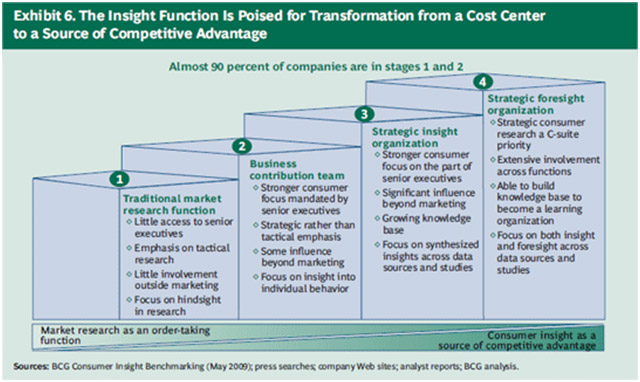By: Gianluigi Cuccureddu
The figures are clear, Emailvision’s survey shows that just 6,2% of the marketers are using social media to gain insights into customer preferences. According to a study by the Chartered Institute of Marketing only 20% of marketers use Facebook for market research. This means not fully utilizing the opportunities of social media and their data. Social media can provide an unparalled scale of real-time data, help identify unmediated consumer opinion and competitor perceptions or offer the ability to connect with those ‘creative consumers’ to co-create the solution with and strategically embed the outside-in perspective in the organization.
Many still do not take advantage of using insights from social media to inform planning and strategies. The two researches mentioned above sustain this.
The survey by Emailvision reports the following key takeaways:
- The most ”sharable” content within email campaigns were promotions and discounts at 34.7%. Controversial content came in as the least “shareable” at 5.6%.
- The majority of marketers see social media campaigns as a way to build brand awareness or reputation (35.8%). Less popular is the desire to gain new names for the customer database (7.4%) or to gain insight in to consumer preferences (6.2%).
- Unsurprisingly Facebook and Twitter are the most important social sites for brands. Higher community numbers were recorded on Facebook with 35.2% of brands claiming more than 5,000 fans, whilst on Twitter only 27.3% of brands reported more than 5,000 followers.
(Note the bold text, will come back to this later)
The study by the Chartered Institute of Marketing reports the following outcomes:
- The report, which looked at Facebook, Twitter, YouTube and LinkedIn, also found that a third (34.5%) of the 1,500 marketers polled said that their social media activity in 2011 was “not at all effective”, with only 13.7% reporting it was “extremely effective”.
- The majority of marketers polled see social media as a tool to engagement (37%), or as support to other channels in a campaign (46%).
- Despite doubts over the effectiveness of social media, the report found that 74.5% of marketers plan to increase their investment in social media in 2012.
- The CIM says that marketers are also failing to see the value of social media as an insight tool, with only 20% of marketers using Facebook for market research.
The conclusion is that organizations find social media ineffective, using it for the purpose of engagement but hardly use it for insights, whilst exactly these very insights should inform how to engage with target audiences, what their anxieties are, what their needs are, where they like to come together on the social Web and much more.
Why ineffective?
Because most just apply the ‘universal ‘social media best practice tactics. These ‘one-size-fits-all’ solutions are out of step with the niche demands of the social web. Insights from social media provide organizations the ability and opportunity to have an evidence and insight-based strategic approach leading to the right outcome delivered in the right way.

The image above shows the effectiveness and utilization of insights from social media. The least effective are best practices. Landscape designed and co-designed strategies fit what was mentioned in the first paragraph, namely that social media can provide an unparalled scale of real-time data, help identify unmediated consumer opinion and competitor perceptions or offer the ability to connect with those ‘creative consumers’ to co-create the solution with and strategically embed the outside-in perspective in the organization.
The most effective and right on target is the latter, where the organization co-creates the strategy.
From insight to foresight
Emergent insights and identification of external stakeholders enable organizations to go into the third and forth stage where the insight function is a source of competitive advantage. Be it making use of these insights passively or actively involving external stakeholders in business processes.
Organizational adaptation
Before using social media for the purpose of insights, new capabilities need to be trained or acquired in order to be successful. Much social media research doesn’t go beyond quantifications and basic insights in sentiment, topics and what more, cause to be another reason why organizations don’t find effectiveness in social media.
Besides capabilities, the alignment of strategies to business objectives is required, a culture that embraces experimentation and the adaptation of processes are needed for successful execution.
According to you, what are the biggest challenges to distill insights from social media?
By Gianluigi Cuccureddu
About the author:
 Gianluigi Cuccureddu, contributing editor, is an experienced writer specializing in innovation, open business, new media and marketing. He is also Managing Partner of the 90:10 Group, a global Open Business consultancy, which helps clients open their activity directly and indirectly to external stakeholders through the use of social media, its data and technologies for the purpose of competitive advantages in marketing, service- and product innovation.
Gianluigi Cuccureddu, contributing editor, is an experienced writer specializing in innovation, open business, new media and marketing. He is also Managing Partner of the 90:10 Group, a global Open Business consultancy, which helps clients open their activity directly and indirectly to external stakeholders through the use of social media, its data and technologies for the purpose of competitive advantages in marketing, service- and product innovation.

